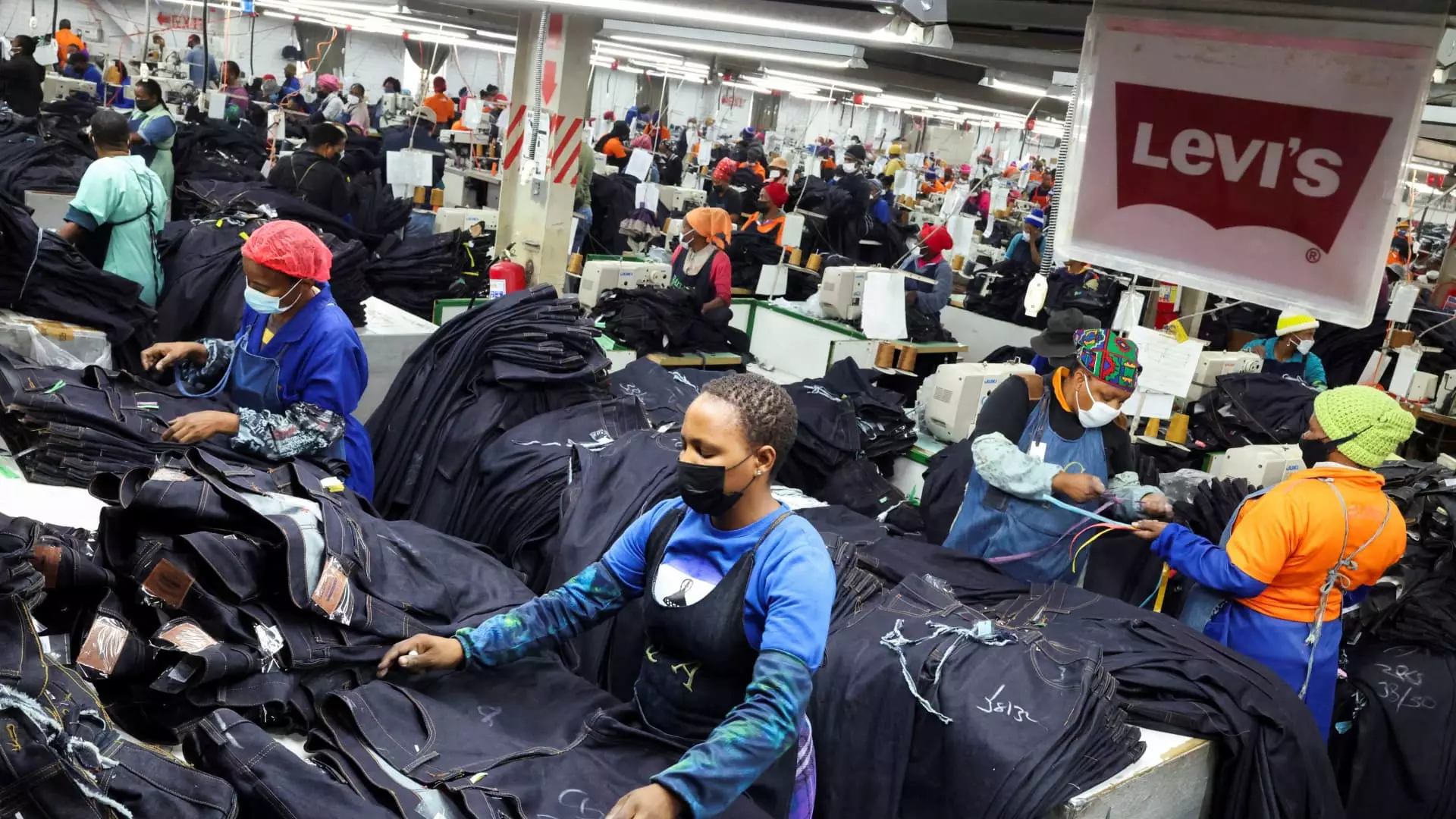In an era where global trade policies seem to shift with unpredictable volatility, Levi Strauss finds itself navigating a minefield. The company’s recent optimism about raising full-year guidance appears, on the surface, as a testament to resilience. However, beneath this veneer lies a more complex narrative of vulnerability and strategic miscalculations. The decision to absorb some tariff costs reflects a desperate attempt to shield margins, but it is ultimately a fragile strategy rooted in assumptions that may soon be invalidated by the unpredictable whims of trade policy. Company executives projecting stability while publicly acknowledging that tariffs could alter forecasts exemplifies the peril of overconfidence amidst external chaos.
What is striking is how Levi’s, like many multinational corporations, appears to be operating under a false sense of control, believing that current mitigation efforts—such as price adjustments and sales strategies—will suffice to weather the storm. The reality is that these companies are increasingly at the mercy of geopolitical decisions that they cannot influence. The broader narrative underscores a systemic flaw: a reliance on short-term tactical responses rather than long-term structural resilience. Levi’s effort to shield itself from tariffs highlights the illusion that cost absorption can fully counteract the long-term consequences of tariff escalation and shifting trade alliances.
The False Promise of Tactical Maneuvers
Levi’s recent focus on strategic shifts—like emphasizing direct-to-consumer sales, shifting away from wholesale partnerships, and innovating with new fits—is no doubt commendable. Yet, these moves serve as band-aids rather than cures to the systemic issues of trade dependence. When a company invests heavily in e-commerce and brand-driven initiatives, it demonstrates agility but also reveals an underlying vulnerability: a business model overly sensitive to external shocks. The assumption that these strategies will insulate Levi’s from broader macroeconomic upheaval is misguided.
Moreover, the company’s emphasis on premium pricing and minimizing promotional discounts to boost margins exposes a risky dependency on consumer confidence. When economic uncertainty deepens, consumers tend to tighten their belts, and even strong brands struggle to uphold sales at higher price points. The fact that Levi’s considers its performance “so strong” as it absorbs tariff costs may hint at optimism that isn’t fully grounded in reality. The risk is that these tactical responses, while temporarily alleviating pressure, do not address the root causes of their vulnerability—namely, a delicate and geographically dispersed supply chain that is increasingly subject to geopolitical complications.
Trade Wars as a Reflection of Global Uncertainty
The broader implications of trade tensions are perhaps the most concerning aspect. Levi’s reliance on countries like Pakistan, Bangladesh, and Indonesia exposes the company to geopolitical vulnerabilities that could aggravate with shifts in U.S. trade policies. The threat from Trump to impose over 30% duties on Bangladesh and Indonesia underscores the peril of globalization—highlighting how fragile the interconnected fabric of international manufacturing truly is.
This growing uncertainty challenges Levi’s to think beyond tactical adaptation and consider systemic change. Are they prepared to diverge from their current sourcing model permanently? Or will they continue to react to, rather than shape, the environment? The potential for disrupted supply chains and increased costs forces a fundamental reevaluation of operational strategies, emphasizing the need for diversification and resilience. Yet, current initiatives seem more reactive than proactive, leaving the door open to future shocks.
The Illusion of Consumer Resilience and Brand Loyalty
Levi’s confidence in its consumer base remains a central narrative, but it warrants skepticism. While the company touts positive growth in women’s apparel and successful collaborations with high-profile figures like Beyoncé, these are marketing tactics that mask the deeper issue: consumer preferences are fickle, and economic pressures can undermine even the most resilient brands.
Expanding into new demographics and launching limited-edition collections are savvy strategies; however, they are insufficient if the broader economic landscape continues to deteriorate. Consumer loyalty is not an infinite resource, especially when faced with rising costs—costs that may eventually trickle down to the consumer and dampen demand. The company’s focus on innovation and partnerships as pillars of growth could backfire if the market shifts toward price sensitivity rather than brand affinity.
Strategic Blind Spots and Future Risks
Levi’s leadership appears optimistic, but their optimism rests on assumptions that may prove dangerously flawed. The company’s efforts to cut costs, sell underperforming units, and drive direct sales are all commendable, but they do not address the elephant in the room: the geopolitical landscape is unpredictable, and trade policies are increasingly weaponized rather than negotiated. Relying on market resilience and brand loyalty for salvation is an optimistic gamble—one that glosses over the strategic risks of dependence on unstable regions and volatile policy environments.
Furthermore, the company’s gross margin hopes and revenue forecasts may be overly optimistic if tariffs escalate or if trade disputes spill into other regions. As Levi’s searches for stability in a world riddled with uncertainty, it must confront the uncomfortable truth: that agile tactics might not be enough. A more critical examination reveals the need for a fundamental shift—embracing a resilient, diversified supply chain and challenging reliance on traditional markets.
Levi’s current strategies are indicative of a company trying to navigate a tempest with a sense of complacency. Their optimism, while understandable, may not withstand the harsh realities of increasingly aggressive trade policies and global economic instability. True resilience will require more than short-term adaptations; it demands a reevaluation of core assumptions about supply chains, consumer loyalty, and the power they hold in shaping the company’s future amid mounting uncertainties.

